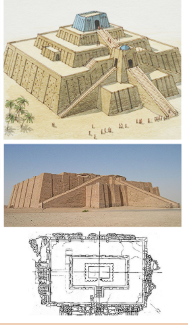Mesopotamia - The Sumerians
1/13
There's no tags or description
Looks like no tags are added yet.
Name | Mastery | Learn | Test | Matching | Spaced |
|---|
No study sessions yet.
14 Terms
Mesopotamia
Often referred to as the "cradle of civilization", Mesopotamia was a sizeable ancient land that occupied the area of the Tigris-Euphrates river system, roughly corresponding to modern-day Iraq, southwestern Iran, southeastern Turkey, and northeastern Syria.
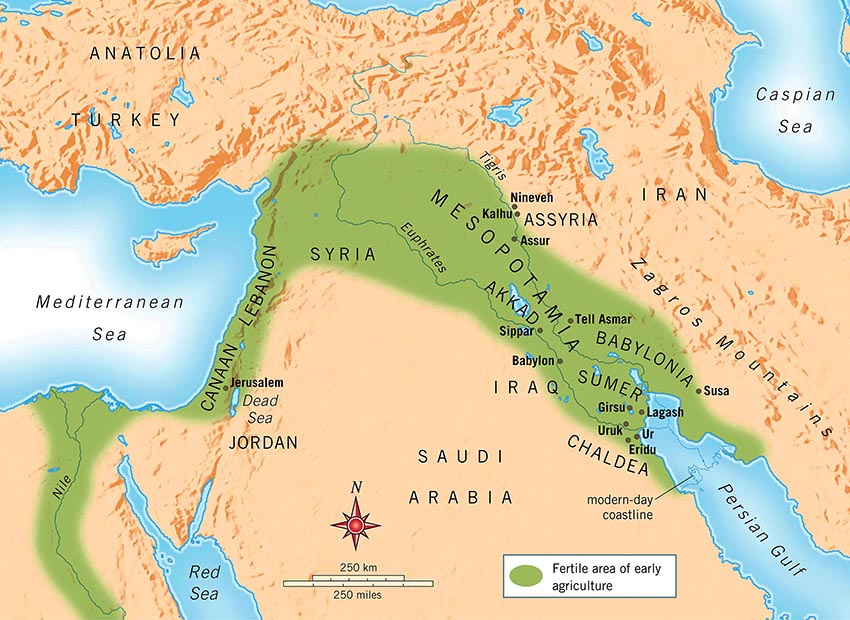
The civilizations of Mesopotamia
Sumer, Akkad, Babylonia, and Assyria
Sumer
earliest known civilization in the historical region of southern Mesopotamia
first civilizations in the world, along with Ancient Egypt, Norte Chico, Minoan civilization, Ancient China, Mesoamerica, and the Indus Valley.
One of the most important city-states in ancient Sumer is Uruk.
Uruk
first true city in the world, credited for its stone public architecture, as well as the origin of writing. Prehistory thus ended with Uruk, where some of the earliest written records were found written in cuneiform.
It is divided into two sections, the Eanna District and the older Anu District, named for and dedicated to the goddess Inanna and her grandfather-god Anu, respectively.
Cuneiform
Meaning “wedge-shaped,” cuneiform is one of the oldest forms of writing known.
During its 3,000-year history, cuneiform was used to write around 15 different languages, including Sumerian, Akkadian, Babylonian, Assyrian, Elamite, Hittite, Urartian, and Old Persian.
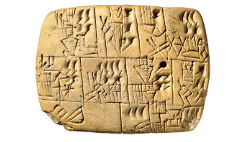
Epic of Gilgamesh
The best-known piece of literature from ancient Mesopotamia is the story of Gilgamesh, a legendary ruler of Uruk, and his search for immortality. It is the oldest surviving epic poem and the longest piece of literature in Akkadian, written in cuneiform. Most interestingly, it also contains a story of a worldwide cataclysmic flood, very similar to the biblical story of Noah.
The Stele of the Vultures
The stone tablet (or stele), sculpted in low relief, was a war memorial by King Eannatum.
This sculpture is believed to be the earliest known instance of a story told in pictures of sustained visual art: its theme being "war" - one of four main themes of the day, the others being Kings, Gods, and Hunting.
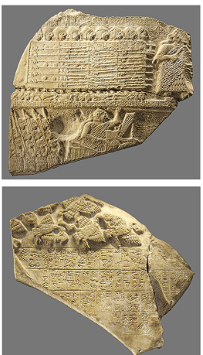
The Standard of Ur
The “standard” is a hollow wooden box inlaid with a mosaic of shell, red limestone, and lapis lazuli. The box has an irregular shape with end pieces in the shape of truncated triangles, making it wider at the bottom than at the top.
It was imagined that it was carried on a pole as a standard, hence its common name.
Inlaid mosaic panels cover each long side of the Standard. Each presents a series of scenes displayed in three registers, upper, middle, and bottom. The two mosaics have been dubbed "War" and "Peace" for their subject matter, respectively a representation of a military campaign and scenes from a banquet.
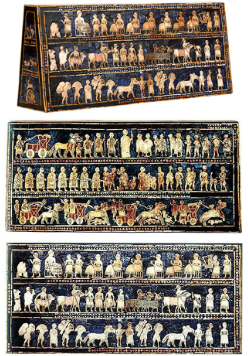
Mask of Warka
Also known as The Lady of Uruk, the mask was most possibly that of Inanna.
The face is made of marble, though it looks like it was meant to be attached to a wooden backing and perhaps wigged in gold.
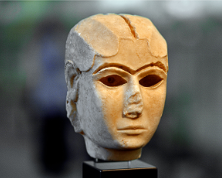
Tell Asmar Figures
The figurines were discovered in a temple dedicated to the god, Abu, the mostly standing figures, made from limestone, gypsum, and alabaster, are known for their striking stylistic features, and their very large eyes, likely to be associated with magical powers. The largest of the figures is most likely the god Abu.
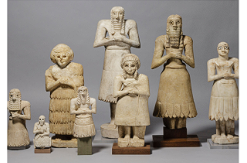
Ziggurats (Holy Mountains)
Ziggurats were mudbrick pyramidal structures with rough exteriors bearing tiers to accommodate the work that took place at the structure as well as the administrative oversight and religious rituals essential to Ancient Near Eastern cities.
Ziggurats were not only visual focal points but were symbols of the theocratic political system. By seeing the ziggurat towering above the city, one made a visual connection to the god or goddess honored there but also recognized that deity's political authority.
Stone-Cone Temple (Mosaic Temple)
So named for the mosaic of colored stone cones driven into the adobe brick façade was the first building built in Eanna.
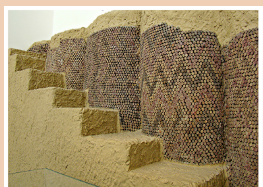
Anu Ziggurat and the White Temple
The ziggurat was the greatest monument dedicated to Anu, built in the Anu District. Surmounting the ziggurat was the white temple, which walls were plastered in white gypsum and built in the typical tripartite Sumerian style.
Its high elevation made the white temple visible from a great distance across the plain of Sumer, a symbol of political power at the time.
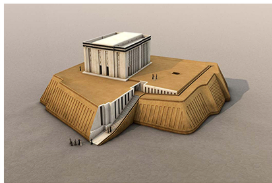
The Ziggurat of Ur
Built during the Sumerian Renaissance by King Ur-Nammu of the Third Dynasty of Ur after the fall of the Akkadian Empire.
The monument is dedicated to the moon goddess Nanna, the patron deity of Ur.
